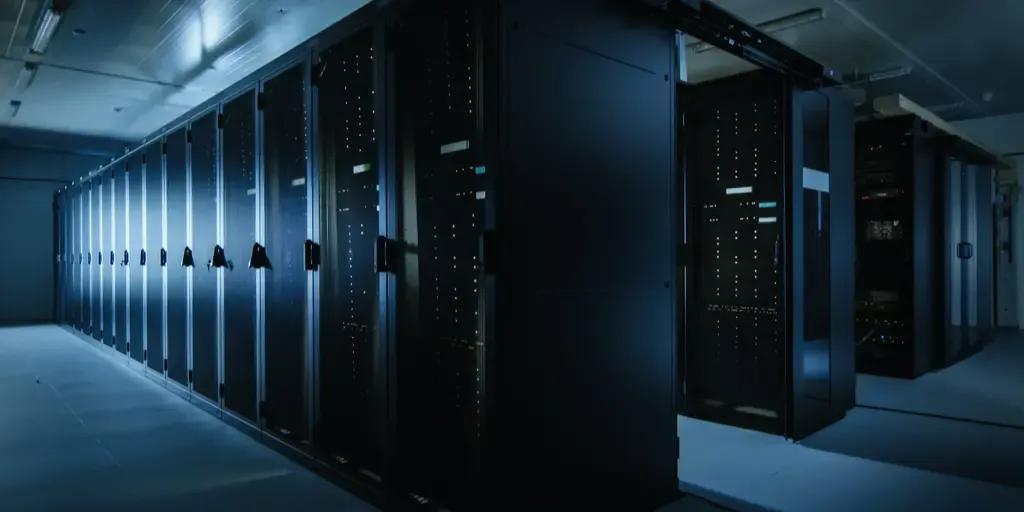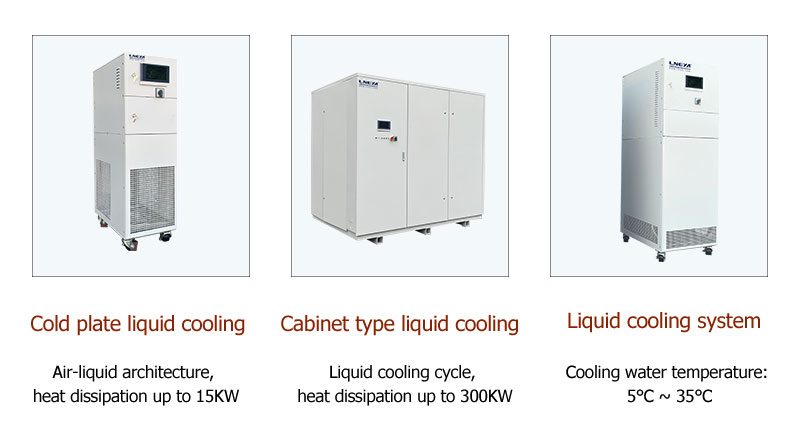Data Center Water Cooling
Contactez-nous dès aujourd'hui pour une solution parfaite de contrôle de la température
Immersion liquid cooling
Immersion liquid cooling is a typical direct contact liquid cooling, which immerses the heating element in the cooling liquid and relies on the flow circulation of the liquid to take away the heat generated by the operation of IT equipment. Because the heating element is in direct contact with the coolant, immersion liquid cooling has higher heat dissipation efficiency, lower noise (no fans at all), and can solve higher heat density.
The current mainstream method is to immerse the server in a specially designed box or a custom-designed casing for the server. However, this architecture reduces the utilization of the data center building space. Without changing the existing data center deployment architecture, the casing Wrap each server with coolant.
1. Single-phase liquid cooling
It means that the coolant does not undergo phase change during the circulation and heat dissipation process and remains in a liquid state. Single-phase liquid cooling requires a high boiling point of the coolant, relatively simple control of coolant evaporation and loss, high compatibility with IT equipment components, and less contamination of the cooling medium, but its efficiency is lower than that of two-phase liquid cooling.
2. Two-phase liquid cooling
Refers to the phase change of the coolant during the circulation and heat dissipation process. Two-phase liquid cooling has higher heat transfer efficiency and does not require a pump to drive the fluid circulation. However, the control of coolant evaporation and loss is relatively complicated. Although a closed box can solve the problem of coolant evaporation and loss, it will cause the box to be damaged due to phase change. The pressure of the body changes, and the design and production of pressure vessels require strict supervision to ensure the safety of use.

Cold plate liquid cooling
The main heating components are fixed on the cold plate, and rely on the liquid flowing through the cold plate to take away the heat for the purpose of heat dissipation. It is a typical indirect contact liquid cooling. Since other heating components such as hard drives and power supplies still require fan-driven air to dissipate heat, Servers currently using cold plate liquid cooling are also called gas-liquid dual-channel servers.
The liquid cooling of data center equipment water coolers is based on the contact between the liquid and the heating device. It is mainly used in high-performance computing in the computer and IT fields and can solve the heat dissipation problem of data centers with higher heat density.
| Modèle | ZLFQ-15 | ZLFQ-25 | ZLFQ-50 | ZLFQ-75 | ZLFQ-100 | ZLFQ-150 |
| Plage de température | +5℃~35℃ | +5℃~35℃ | +5℃~35℃ | +5℃~35℃ | +5℃~35℃ | +5℃~35℃ |
| Eau de refroidissement | 5℃~30℃ Adopte une vanne de régulation Siemens/Honeywell pour contrôler le débit de l'eau de refroidissement. | |||||
| Précision du contrôle de la température | ±0.2℃ | ±0.5℃ | ±0.5℃ | ±0.5℃ | ±0.5℃ | ±0.5℃ |
| contrôle du débit | 10~25L/min | 25~50L/min | 40~110L/min | 70~150L/min | 150~250L/min | 200~400L/min |
| Le contrôle du débit est ajusté par un convertisseur de fréquence, la précision est de ±0,3L/min. | ||||||
| Capacité de refroidissement (MAX) | 15kW | 25kW | 50kW | 75kW | 100kW | 150kW |
| Volume de stockage | 15L | 30L | 60L | 100L | 150L | 200L |
| Brin | Eau, huile de silicone, liquide fluoré, solution aqueuse d'éthylène glycol, etc. | |||||
| Pipeline moyen | SUS304 | SUS304 | SUS304 | SUS304 | SUS304 | SUS304 |
| Taille des interfaces d'entrée et de sortie | G3/4 | G1 | G1 | DN32 | DN40 | DN50 |
| Interface avec l'eau de refroidissement | G3/4 | G1 | DN40 | DN50 | DN50 | DN65 |
| Débit d'eau de refroidissement 7~20℃ | 2,5m³/h | 4m³/h | 8m³/h | 13m³/h | 17m³/h | 25m³/h |
| 380V 50HZ | 1kW | 1,5 kW | 3kW | 4kW | 5kW | 6kW |
| coquille | Tôle laminée à froid spray RAL7035 | |||||
| Modèle | ZLFQ-200 | ZLFQ-250 | ZLFQ-300 | ZLFQ-400 | ZLFQ-500 |
| Plage de température | +5℃~35℃ | ||||
| Précision de la température | ±0.5℃ | ||||
| Contrôle du débit | 15~30m³/h | 20~35m³/h | 25~40m³/h | 30~60m³/h | 40~70m³/h |
| Capacité de refroidissement(MAX) | 200kW | 250kW | 300kW | 400kW | 500kW |
| Volume de stockage | 250L | 300L | 600L | 1000L | 1200L |
| Moyen | Eau, huile de silicone, liquide fluoré, solution aqueuse d'éthylène glycol, etc. | ||||
| Pipeline moyen | SUS304 | ||||
| Taille des interfaces d'entrée et de sortie | DN65 | DN65 | DN65 | DN80 | DN80 |
| Interface avec l'eau de refroidissement | DN80 | DN80 | DN100 | DN100 | DN125 |
| Débit d'eau de refroidissement 7~20℃ | 34m³/h | 43m³/h | 51m³/h | 69m³/h | 86m³/h |
| Alimentation 380V 50HZ | 7kW | 7kW | 8kW | 9kW | 13kW |
| coquille | Tôle laminée à froid spray RAL7035 | ||||

Nous assurons la conception et la fabrication de systèmes complets de contrôle de la température. Des modèles standard aux produits personnalisés complets jusqu'à 1000 tonnes. Nous sommes spécialisés dans le service à la clientèle et nous nous efforçons d'aider chaque client à obtenir le système de contrôle de la température le mieux adapté à ses besoins spécifiques.
Nous fournissons des solutions personnalisées non standard.
Courriel : info@lneya.com ID WeChat : +8615251628237 WhatsApp : +86 17851209193

 LNEYA
LNEYA
 简体中文
简体中文

















































































